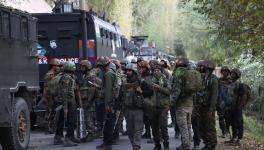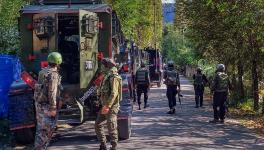Is Ethnic Tension Behind the Shillong Violence?

Image Courtesy: WION
The Chief Minister of Meghalaya, Conrad Sangma, on Sunday told the press that those indulging in acts of violence in Shillong were 'paid' and not from the area. Since Thursday, Shillong has witnessed violence aimed towards non-locals. Though the genesis of this current bout of aggression arose when an altercation in a predominantly Punjabi locality was misrepresented on social media, the violence has gained a generally anti-outsider overtone. Sporadic attacks have put non-local communities on the edge. The language, employed by the Khasi Students Union (KSU) and other pressure groups, does not necessarily embody that of ethnic tension. Due to the locality being situated in a commercial part of Shillong – close to Police Bazar, it is likely that freeing up the land for 'urban development' may be behind the violence. Statements of the pressure groups and the CM's comments on the violence may shed more light on it.
The CM, apart from stating that the stone pelters were not from Shillong, also mentioned that they had been paid with expensive liquor and cash. The CM said that this information was culled out of interrogating those arrested. According to the police, the majority of the youths are from the West Khasi Hills and outskirts of the city. The CM also stated that meetings with various headmen had been held. The concerned headmen had appealed to the youths to return home and desist from violence. However, these appeals were not adhered to. Thus, the headmen, as well as the government, formed the view that the youths were not from Shillong. Sangma agreed that the situation may be taken advantage of for political gains. However, he did not comment on whether the Congress was involved in it to destabilise the government.
The KSU, however, has termed the violence as a 'public revolution'. The Hynniewtrep Youth Council (HYC), KSU and the Bharatiya Janata Yuva Morcha (BJYM) Meghalaya Pradesh have all pushed for the residents of the locality to be relocated elsewhere. The KSU has stated that unless this is done promptly, the situation is unlikely to normalise. The BJYM has asserted that this is not the first time the residents of Punjabi Lane have shown their 'high-handedness towards the tribals'.
In a letter to the editor of The Shillong Times, a resident of Shillong, N. K. Kehar, asserted that most minorities in the state did not come willingly, but were brought during British colonialism to fulfil various roles. Many have since left Shillong seeking better opportunities elsewhere. These communities have also contributed to building Shillong. Earlier, another letter to the editor, by Rayner Dkhar had pointed out the dangers of 'fake news' in the light of the violence that erupted on Thursday evening.
Thus one cannot assert a general ethnic tension behind the violence. Ethnicity may have been a factor and some of the statements made by pressure groups do point towards it. However, what is interesting to note here is that the pressure groups, particularly the KSU, did not state that the 'outsiders' should leave Meghalaya or Shillong. Instead, they have advocated rehabilitation to another locality. This is a departure from the diktats they used to issue in the past. Between 1985 and 1987 – after the Assam Accord was signed – 'Nepalis' were the prime target for the KSU. 10,000 residents were summarily 'deported' from the state without even checking their documents. Thus, the present violence is not quite like what has occurred in the past. It may instead be linked to real estate, hence the 'paid' rioters. However, until the police investigation reveals anything concrete, one can only speculate on the root cause of the violence.
Patricia Mukhim, the editor of The Shillong Times, has attributed the violence to a prevailing ethnocentrism in the state. An article in The Statesman mentioned the bouts of violence Meghalaya witnessed since its formation in 1979. Various groups at different points of time have faced the brunt of ethnocentric sentiments resulting in riots and violence. She also mentioned the circumstances under which the residents of Punjabi Lane came to the state, that they were brought during colonial times to clean the dry latrines. According to her article, the residents of Punjabi Lane have resisted all attempts at relocating them to more spacious locations and instead have chosen to continue living in the congested 'ghetto' that they currently live in. Though their resistance to relocation may carry overtones of a 'brave minority' in their minds, one cannot discount considerations other than ethnocentrism being behind the violence they face.
Get the latest reports & analysis with people's perspective on Protests, movements & deep analytical videos, discussions of the current affairs in your Telegram app. Subscribe to NewsClick's Telegram channel & get Real-Time updates on stories, as they get published on our website.
























